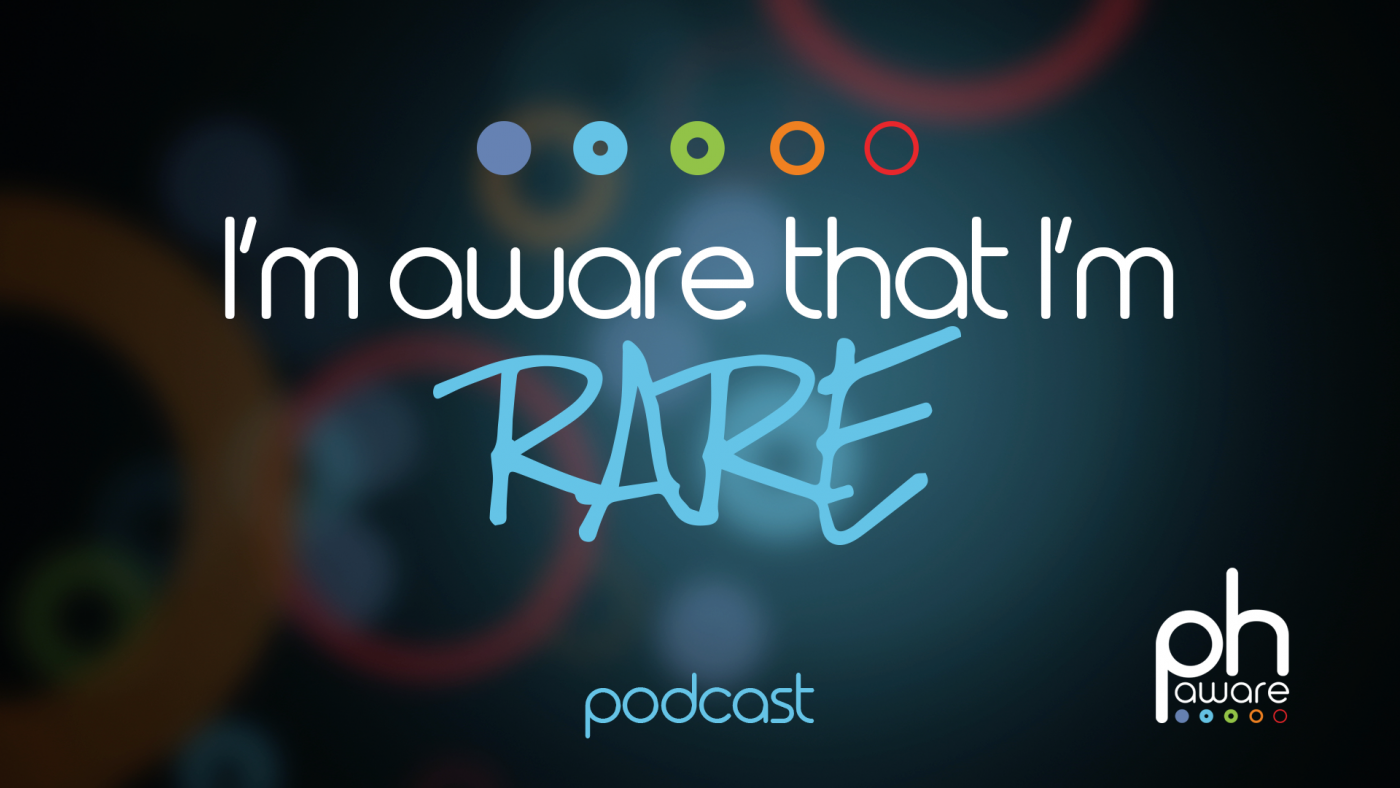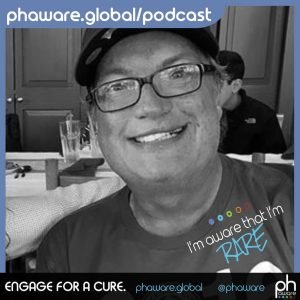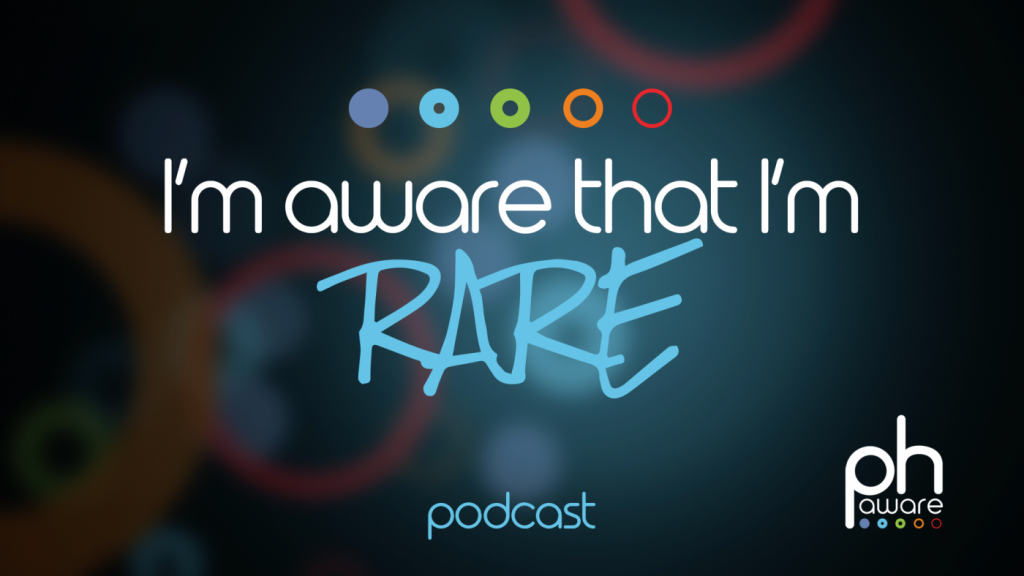Phaware Podcast: Stuart Berwick was Close When Transplant Fell Through

This podcast series, created and produced by phaware, is being offered as a regular guest feature on Pulmonary Hypertension News to bring the voices and life experiences of PH patients, family members, caregivers, healthcare specialists, and others to our readers. You can listen to the podcast directly, or read it via the transcript that runs just below.
I’m Aware That I’m Rare: Stuart Berwick
The phaware™ interview
Long-term survivor Stuart Berwick shares his story on the 16th anniversary of his pulmonary hypertension diagnosis. Stuart, who is also a cancer survivor, discusses the importance of clinical trials, the power of support groups, and why volunteerism is a passion.
This is Stuart Berwick and I’m from Dallas, Texas.
I am a patient. I was diagnosed 16 years ago today. Prior to it, I had been on holiday in Europe, and found great difficulty  climbing the Duomo in the Vatican. When we got back to the states, I immediately started to look into why I was having so much trouble breathing, and having no stamina while I was just a few months earlier just fine.
climbing the Duomo in the Vatican. When we got back to the states, I immediately started to look into why I was having so much trouble breathing, and having no stamina while I was just a few months earlier just fine.
As I was walking up that Duomo and had these little old ladies passing me by, I thought it was more than just asthma or things like that because I wasn’t sneezing, I didn’t have anything that had felt like what I would’ve equated with an asthma attack. I really felt like I needed to look into it. I am also a cancer survivor, so I think that’s maybe why I pushed harder for a diagnosis.
I started seeing an internal medicine doctor as soon as I got back. At first, we were led down the path of whether it was asthma or something like it, and so I tried various asthma medications and nothing seemed to help. Then I went to a hematologist and we found that my blood had way too many red blood cells in it, and I was diagnosed as having something called polycythemia vera, which is a disorder from the bone marrow where you produce red blood cells in abundance. We learned later on of course this was because of the pulmonary hypertension.
My oxygen levels being down, I started mass-reducing the red blood cells. For 18 months I would go into their offices and get a liter taken out per week to try and stay ahead of how thick and heavy my blood was with red blood cells. Finally, after a year and a half of that, I had a bone marrow biopsy, which indicated that there was no problem in the bone marrow, and there was no cancer, so there must be something else that’s doing this.
I was referred to a pulmonologist, and when I saw him, he said, “I think I know what it is, but I hope it’s not what I think it is, and I need you to go to see a cardiologist.” Sixteen years ago today I saw that cardiologist. He came in, and I passed out after about 40 seconds of doing the stress test, and he said, “You need a double lung and heart transplant.” I went, “What?,” and he said, “Yep, you need a double lung and heart transplant. You have what looks to be a pulmonary hypertension.”
In shock, I went out into the lobby and told my wife and mother that that was the diagnosis I had just received, and went back to the pulmonologist and he immediately referred me down to Baylor [Medical Center] in downtown Dallas for their transplant program and for the PH program, too.
At 16 years ago, there was one therapy — an IV therapy, and I’m still on it today, 16 years later. So I’ve made a lot of IVs in the last 16 years. At the beginning I was put on a transplant list. At that time, the transplant list was a time-based system. With only one therapy being available, they wanted me to have a back-up plan in place just in case the IV therapy didn’t work. So I went through all of the tests and inoculations, etc., to qualify for a double lung and heart transplant, and waited for my 3 1/2 years.
Then, when I got to the 3 1/2 years, it was December 2004, and January 1 of ’05, it went to a score-based system, and I was no longer eligible. In December, my name had been called twice for some organs, but the doctor had turned them down knowing that the score-based system was about to take place, and that I was way too healthy at that point to be considered for a transplant.
First I took it pretty hard, in that I had had that day as like a goal for myself to reach. With my daily mixing of the IVs, and going through all that trouble, and seeing the doctors and missing work, but there was always that goal of getting to that 3 1/2 years so I could get transplanted. When I was told that I wasn’t going to get it, and that what I should consider now is to look out to five years of survival. When we got there, it was, well, now we look to 10 years. So, yeah, we moved the target, and I’m actually on the inactive list, but still if my score goes up, I will get right back into the transplant list, so that’s a comfort.
I think for me at first it was very hard to accept that I had to move it out to the five years. I wanted to get it over with, but a month after being told, I think I came to that realization that, “Yeah, it’s much better that I not be transplanted at this time, and if I get to five years, the doctors have just learned that much more about transplant, and they’re two years more experienced.” Each time I pushed it out, I thought about the experience that the doctors were gaining in that time that I was inactive. I still look at it that way today.
Back in 2001, the HIPAA [Health Insurance Portability and Accountability Act] rules didn’t exist, and Baylor encouraged us to come ahead of our appointments for our quarterly meetings with the PH team. In those meetings we may meet other PH patients. We also met other recipients who already had gotten transplanted, and we met people with other diseases that were related.
It was really good for us, for, at that time, my wife and I, to be able to meet these people and know that they are doing pretty good or not. Face-to-face really helped. It helped clarify things for me. It helped identify that people could indeed survive on IV therapies. It also seemed to me that the people that did the most were the ones that succeeded the most. I was happy to be working at that time, and trying to live a fairly normal life. It couldn’t always be normal, but I will try as much as possible for it.
Having a chance to talk with the other patients, and finding out what was successful for them in their lives, and what they couldn’t do anymore or what they could, helped me come together with the disease and realize it wasn’t the end of the world and that there is a future. I just had to figure out how to make that future.
I’ve been on several research trials, some through Vanderbilt and Cleveland Clinic and others. They’re mainly large group trials of just blood samples and things like that. I think that any patient should be involved in a clinical trial, because when you look around and you see the other patients that are fighting this disease, you can see that they got there and they’re on their therapies because somebody else took that step to go onto a clinical trial.
Not all of them, not all of the trials and research, is where you are going to take a pill or a placebo. A lot of what is learned is learned from either blood samples or DNA or other ways of doing research. It’s not all specific to one pill or one type of therapy or another. It can be a deeper research into what whether a certain gene is showing up as being a problem gene for PH patients.
I know for myself that I feel I need to be available to the PH community and get involved in every trial that I can. Not all the trails are going to be on the latest med from whatever company, or whatever kind of method of taking that med. So if we can just give some of our time, and maybe some of our blood, or if you got the chance to where you do you get to do a real clinical trial of a Stage III or Stage II drug, then I think that we should feel a certain obligation to our fellow patients.
I grew up in a family where volunteerism was just part of our family life. Now, my concentration on volunteering has either been through my church, or with pulmonary hypertension awareness, or helping other patients with pulmonary hypertension. When I was a kid, I was always volunteering. Even in my early teens, I was a volunteer fireman, and after I got the cancer and luckily came through it, I went back to the hospital and became an EMT to volunteer again with my local fire department.
When I moved to Texas, I volunteered with the sports car club because I used to race cars. It is always been part of my DNA to volunteer, and my mom and brother and sister are the same way. My mother, at 86, is still volunteering.
I just feel like everybody has that in them to volunteer to help another patient. To help with their support group or help with phaware or whoever. You need to give of yourself to get back, is the way I look at it.
I’m Stuart Berwick, and I’m aware that I’m rare.
And learn more about pulmonary hypertension at www.phaware.global. #phaware #phawarepod
Note: Pulmonary Hypertension News is strictly a news and information website about the disease. It does not provide medical advice, diagnosis, or treatment. This content is not intended to be a substitute for professional medical advice, diagnosis, or treatment. Always seek the advice of your physician or other qualified health provider with any questions you may have regarding a medical condition. Never disregard professional medical advice or delay in seeking it because of something you have read on this website. The opinions expressed in this column are not those of Pulmonary Hypertension News or its parent company, Bionews Services, and are intended to spark discussion about issues pertaining to pulmonary hypertension.










Leave a comment
Fill in the required fields to post. Your email address will not be published.